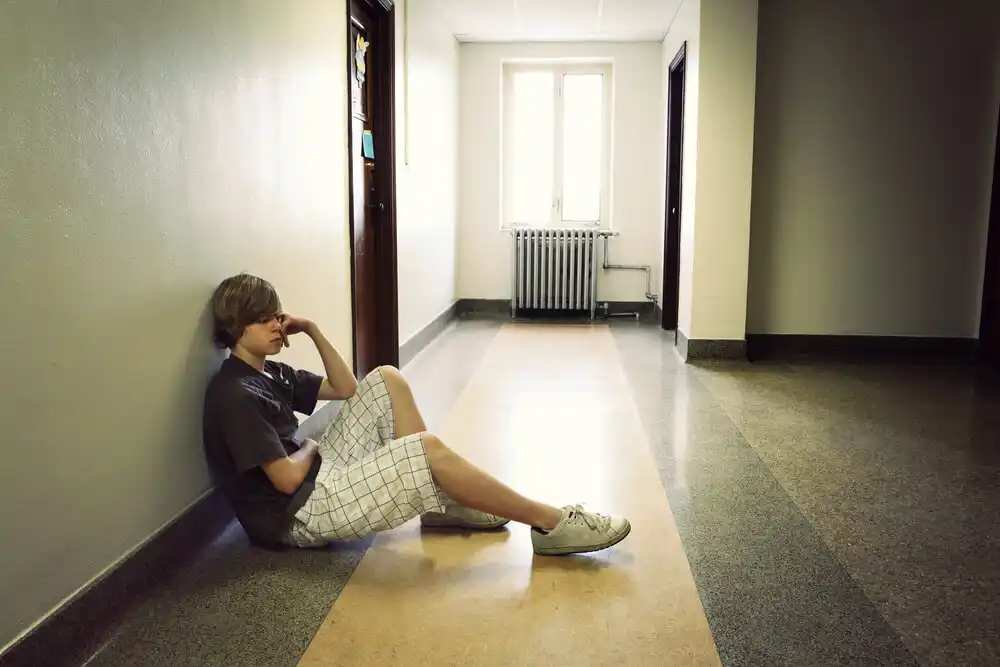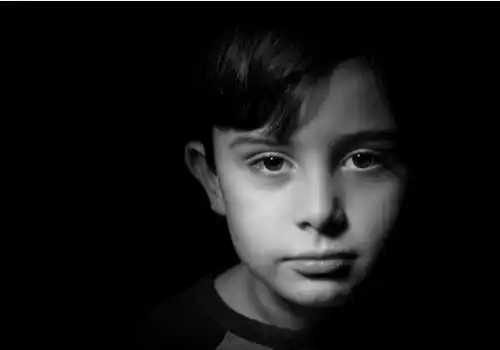Understanding Child Psychopathy

Child psychopathy is characterized by a lack of empathy and an absence of guilt in the face of an act that physically or psychologically harms another person.
This problem is also recognized as a severe kind of antisocial personality disorder. It’s based on the fact that a child doesn’t relate adequately on a social level.
The causes may have a genetic component. However, it’s also thought that certain lesions in the frontal lobe of the brain, as well as traumatic experiences, can lead to the disorder. This is evidenced in an article published in La Revista de Derecho Penal y Criminología.
We must bear in mind that psychopathy doesn’t necessarily describe the insane, violent, and criminal beings usually seen in the movies. In fact, a psychopath could simply be a person with a lack of empathy or little sensitivity.

Child psychopathy
Although developing psychopathy in childhood can cause great concern to parents, the idea that the children, due to the disorder, will become killers, as depicted in the movies, must be eliminated.
If your child shows certain symptoms, they should be seen by a professional. As in all diseases, a good diagnosis and a correct evaluation of their own case is necessary.
If an evaluation isn’t conducted properly, complications could be triggered that might pose a risk to the child. Below, we talk about certain symptoms that usually occur in children with a tendency to childhood psychopathy.
You might also be interested to read: Antisocial Behavior and Brain Structure
Basic symptoms of child psychopathy

1. Lack of emotion
Children who develop this disorder will find it extremely hard to express any emotions at all, in contrast to those who are healthy, in whom emotions are extremely evident. Therefore, if a child shows little of this type of response to the environment, it may be a sign of psychopathy.
In addition, as mentioned above, they tend to feel little empathy, as confirmed in a study published in Anuario de psicología jurídica in 2005. Consequently, they have significant difficulty when it comes to identifying and interpreting the emotions of others.
As a result, in most cases, these children develop great insensitivity. This means they don’t feel guilt or remorse as a result of bad behavior.
They may externalize and show their curiosity and lack of empathy by mistreating animals. In certain cases, they might even mutilate or kill one.
It’s extremely important to discuss each symptom or behavior that the child carries out with a professional.
2. Lack of remorse
As a rule, when a child is told they’ve done something wrong, they feel some kind of remorse. After all, children aren’t born knowing everything and, sometimes, they’re wrong. Therefore, they must be taught, patiently and gradually, social behaviors and good manners.
However, as the aforementioned article in the La Revista de Derecho Penal y Criminología clearly shows, children who develop an antisocial personality disorder don’t show remorse. That’s because they’re not capable of feeling guilty for what they do. They can’t feel the other person’s pain or have compassion for them. It’s simply something they don’t understand, even when it comes to those closest to them.
As we mentioned earlier, they don’t necessarily have to exercise violence physically, but it can also be psychological or verbal.
You might also like to read: Emotional Bullying: How to Detect and Fight it

Causes of childhood psychopathy
Below, we list a series of causes that are among the causes of antisocial behavior.
Maltreatment and child abuse can cause brain damage and distortion in psychological development, which introduces violence as a solution to problems. Among the affectations would be a deficit in emotional processing with regard to fear conditioning, pain perception, and recognition of anger and fear. Furthermore, the abused child decreases their feelings of empathy, self-confidence, and security.
Exposure to traumatic events may affect brain structures and neurobiological systems. The influence of traumatic events can also be modulated by a genetic predisposition.
Low levels of the enzyme MAO cause greater sensitivity to negative events with increased aggressive behavior.
Psychopathy develops in different ways depending on the individual, but there is – as this research confirms – a tendency to believe that the predisposition of neurological factors is enhanced by environmental variables. This causes, in the subjects, “a series of structural deficiencies that hinder emotional processing and their ability to socialize. Therefore, they will learn to develop antisocial behaviors as a defense and survival mechanism in a hostile environment.”
Diagnosis and treatment
As with mental disorders in general, psychopathy doesn’t have one single, specific cause. If an individual develops the disease, it may be due to a combination of factors.
Today, there are certain technologies with which some physical symptoms can be detected with relative ease. This is thanks to the constant advancement in technology, science, and medicine.
For example, certain psychopathic traits can be identified through a study called positron emission tomography (PET), as shown in an article published in La Revista Neurología, Neurocirugía y Psiquiatría.
Of course, psychological therapies are highly recommended. Research conducted by professionals from the Universidad de la Frontera, Chile, suggests that insight-oriented therapies and cognitive-behavioral therapies seem to be effective. Both therapies work with the characteristic features of the disorder.
In addition, family support, especially the support of parents, is extremely important. In fact, this will be the greatest form of support for the little one, who’ll need to feel loved and accompanied if they’re to face the disorder in the best possible way.
All cited sources were thoroughly reviewed by our team to ensure their quality, reliability, currency, and validity. The bibliography of this article was considered reliable and of academic or scientific accuracy.
- Aguilera Lazaro, E. C., Ostrosky, F., & Camarena, B. (2012). Interacción de Temperamento y MAO-A en pruebas de Inhibición en Preescolares. Acta de investigación psicológica, 2(1), 543-554. http://www.scielo.org.mx/scielo.php?script=sci_arttext&pid=S2007-48322012000100005
- Garrido, F. J. S. (2009). Fisonomía de la psicopatía. Concepto, origen, causas y tratamiento legal. Revista de derecho penal y criminología, (2), 79-125. http://e-spacio.uned.es/fez/eserv/bibliuned:DerechoPenalyCriminologia-2009-2-10003/PDF
- Guitart, E. R., & Robles, J. L. A. (2019). Psicopatía en la infancia y adolescencia. Olhar criminológico (OC), 129. http://abcriminologia.com.br/revistaoc/arquivos/revista-oc-iii.pdf#page=129
- Halty, L., & Prieto-Ursúa, M. (2015). Psicopatía infanto-juvenil: Evaluación y tratamiento. Papeles del Psicólogo, 36(2), 117-124. https://www.redalyc.org/pdf/778/77839628005.pdf
- Romero, E., Luengo, M. Á., Gómez-Fraguela, J. A., Sobrela, J., & Villar, P. (2005). Evaluación de la psicopatía infantojuvenil: estudio en una muestra de niños institucionalizados. Anuario de psicología jurídica, 15, 23-40. https://www.redalyc.org/pdf/3150/315031849003.pdf
- Lara-Tapia, H. (2005). Enfoques actuales en la Psicobiología contemporánea de la conducta violenta y delictiva. Revista Neurología, Neurocirugía y Psiquiatría, 38(1), 28-36. https://www.medigraphic.com/pdfs/revneuneupsi/nnp-2005/nnp051f.pdf
- Vinet, E. V. (2010). Psicopatía infanto-juvenil: avances en conceptualización, evaluación e intervención. Terapia psicológica, 28(1), 109-118. https://scielo.conicyt.cl/scielo.php?pid=S0718-48082010000100010&script=sci_arttext
This text is provided for informational purposes only and does not replace consultation with a professional. If in doubt, consult your specialist.








